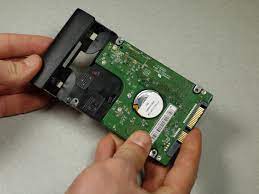

Right click on the unallocated space behind the new hard drive and select New Simple Volume. In general, a Initialize Disk dialog box will automatically open, and you only need to select the Disk 1 and click OK to initialize the new hard drive.Ĥ. If it doesn’t show up, continue to do the following.ģ. Go to This PC and see if the connected hard drive displays as a new volume. Place the new hard drive in an external enclosure or connect it to a SATA-to-USB adapter, and then plug the enclosure or adapter into a USB port on your laptop.Ģ.

Step 1: Connect the new hard drive to the laptop externally.ġ.

Step 2: Transfer data from the old hard drive to the new one.Step 1: Connect the new hard drive to the laptop externally.How to replace a laptop hard drive without losing data (In this case, if the hard drive is unable to boot, see How to Backup Data without Booting into Windows 10.) Your laptop is equipped with an old-fashioned mechanical HDD and runs slowly, so you want to replace the HDD with a new SSD to improve your laptop’s performance.Your laptop comes with a small-capacity hard drive, and the space available is now getting less and less, so you want to replace the hard drive with a larger one.Now, this page will show you how to replace a laptop’s hard drive without losing data. You need an efficient data transfer strategy, allowing you to transfer all data from the old hard drive to the new one. So, is there any way to replace a laptop’s hard drive without losing data? The answer is Yes. It will not automatically or magically transfer to the new hard drive. If you take out the hard drive and put in another one, all data will remain on the removed hard drive. All data in your laptop, including the Windows operating system, programs, files, etc., is stored on its internal hard drive. Some people ask, "Will I lose my data if I replace my laptop’s hard drive?" The answer is Yes. How to Replace Your Laptop Hard Drive without Losing Data


 0 kommentar(er)
0 kommentar(er)
